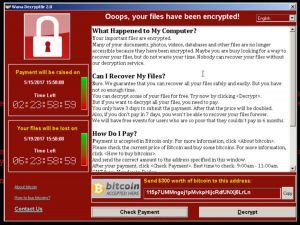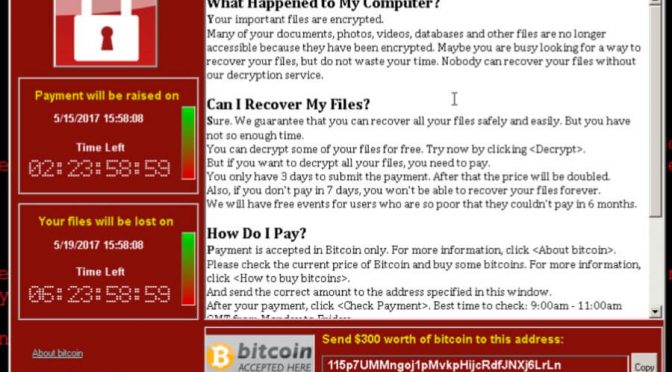
WannaCry Ransomware has now affected over 200,000 systems in 150 countries around the world. In the UK, the National Health Service has been very badly affected causing massive disruption across the country.
Although the initial outbreak was stopped, several new versions of this virus have been reported in the ‘wild’. Some have been stopped by registering the ‘kill-switch’ domain name, but it is widely believed that a version or versions of the virus has been released that does not contain a kill-switch.
ONLY COMPUTERS RUNNING WINDOWS ARE IN DANGER OF INFECTION CURRENTLY.
Before you do ANYTHING else BACKUP your important files onto removable storage. Upon completion of this backup, ensure it is kept separately from your computer in a safe place. Should you become infected with this Ransomware, you don’t need to consider paying any kind of ransom as your files are safely stored elsewhere.
UPDATE your antivirus software, if you don’t have antivirus software installed enabled Windows Defender which is free.
You MUST ensure that your Windows system is correctly patched with the latest security updates.
These are available from here and here.
SHARE THIS INFORMATION to protect YOU, Your Family, Co-Workers and Friends to avoid this affected you.
The following information was published by Wordfence Security
- If you use Windows, install the patch that Microsoft has released to block the specific exploit that the WannaCry ransomware is using. You can find instructions on this page in the Microsoft Knowledge Base. You can also directly download the patches for your OS from the Microsoft Update Catalog.
- If you are using an unsupported version of Windows like Windows XP, Windows 2008 or Server 2003, you can get the patches for your unsupported OS from the Update Catalog. We do recommend that you update to a supported version of Windows as soon as possible.
- Update your Antivirus software definitions. Most AV vendors have now added detection capability to block WannaCry.
- If you don’t have anti-virus software enabled on your Windows machine, we recommend you enable Windows Defender which is free.
- Backup regularly and make sure you have offline backups. That way, if you are infected with ransomware, it can’t encrypt your backups.
- For further reading, Microsoft has released customer guidance for the WannaCry attacks and Troy Hunt has done an excellent detailed writeup on the WannaCry ransomware.

